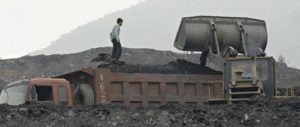China’s shift to a low-carbon economy will require funding and technology. This can be acquired only through growth – and not a return to traditional agricultural society. The accumulation of energy-intensive products such as urban infrastructure and buildings is essential for on-going industrialisation and urbanisation. And current economic and technological conditions mean that energy from fossil fuels is still more competitive than that from new sources.
If China were to abandon fossil fuels immediately in favour of costly renewable energy, its urbanisation and industrialisation processes would become sluggish and dragged out, with living standards unable to reach a standard comparable with developed nations as rapidly as necessary.
Developing new energy sources requires huge financial and technological input. Where is that to come from? In developed nations, renewable energy is subsidised by taxes on fossil fuels. If China is to boost development of the electric-vehicle industry, it clearly needs a large conventional vehicle industry to tax. If there are only one million cars on the road and the government collects 1,000 yuan (US$151) in tax from each, it only raises one billion yuan (US$151 million) – an entirely inadequate sum for developing electric cars and bringing them to market. But if one hundred million cars are taxed at the same rate, the country has 100 billion yuan (US$15 billion) with which to foster an electric automobile industry.
Cutting out carbon immediately is both impossible and unnecessary. And here lies the paradox: high-carbon growth can help to build a low-carbon economy. In order to promote rapid change, however, high-carbon growth must be limited and the ultimate aim must be low-carbon transformation.
Take Europe’s solar-power sector as an example. Germany has adopted a method of “cross-subsidisation”, where revenues from cheap coal or “non-green” nuclear power are used to subsidise more expensive wind and solar power. Onshore wind power in Germany currently costs 0.09 euros (US$0.13) per kilowatt-hour, offshore wind power 0.14 euros (US$0.20) and solar power 0.40 euros (US$0.56). They need to be cross-subsidised by relatively cheap coal and nuclear power to stay viable.
In the early 1990s, when China started building the Three Gorges Dam, the government didn’t have sufficient funds to pay for it and raising finance from the markets was problematic, and so cross-subsidies were used. A “Three Gorges levy” of three thousandths of a yuan was charged for every kilowatt-hour of electricity consumed. Under the 2006 Renewable Energy Law, the Chinese government also implemented a system of subsidies for wind and solar power. Solar, for example, receives 20 yuan for every watt of capacity – or 20,000 yuan (US$3,011) for every kilowatt. Given that one kilowatt of coal-generating capacity cost 6,000 yuan (US$903), this level of subsidy is high. The government’s set price for solar-generated power coming onto the grid is at least five times higher than that for electricity from coal.
There is a lot of debate over nuclear power in developed nations. The American Power Bill submitted to the United States Senate in June explicitly calls for the approval and construction of new nuclear power stations in order to limit greenhouse-gas emissions. Germany’s Green Party, meanwhile, is set on the rapid phasing out of nuclear power and prevention of further development. But Germany’s economists and power experts are by no means all in agreement. Even if wind power could replace nuclear power, major questions over transmission would remain – for instance, how to move the power from the north, where the wind is, to the south, where consumption is concentrated.
China’s experience in moving power from the Three Gorges Dam to Shanghai and Guangzhou, a thousand kilometres away, shows that this can be done quite easily – but the German public opposes the construction of new transmission lines, and long-distance transmission is impossible without public consent.
The “low-carbon paradox” is not limited to China. There is also significant controversy over the development of renewables and the status of nuclear power in developed nations and that is why their emissions-reduction targets are often conservative and fudged. For China, a developing nation still lacking funding and technology, there is even greater pressure to use high-carbon development to promote the low-carbon economy. This means that, in order to speed up the low-carbon transformation, China may have no choice but to go through a stage of high-carbon growth.
International cooperation and coordination is needed to reduce the risks and accelerate the use of renewable energy. Developed nations, which benefit from historical experience in such transformations, can seek the rapid commercialisation of renewable energy within the context of the fight against climate change. China, however, needs to be positive but cautious: research and development is appropriate, but not large scale subsidy and implementation. In particular, taxpayers’ money should not be used to subsidise individual consumption – and that includes subsidies for solar power. Cross-subsidies are feasible, both theoretically and practically, but only to a certain degree. When it comes to nuclear power, issues around raw materials, safety and the environment need to be evaluated further in order to reduce risk.
The “transformation paradox” is an objective fact. And it is particularly important during China’s current stage of development. While we must positively engage with global emissions-reduction efforts, we also need to be cautious in our commitments.
Pan Jiahua is executive director of the Center for Urban Development and Environment at the Chinese Academy of Social Sciences.
Homepage image from SmokingPermitted


